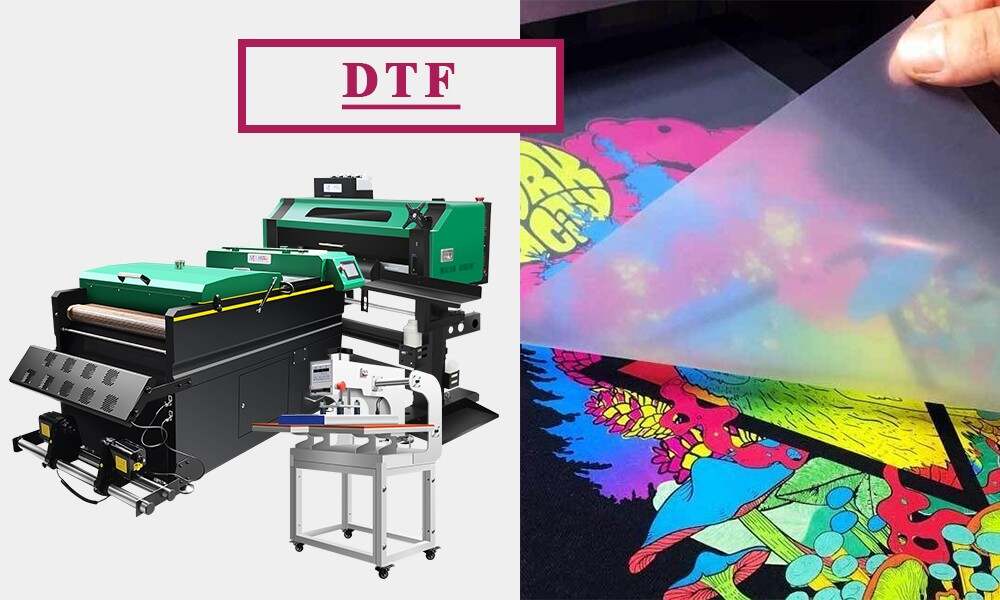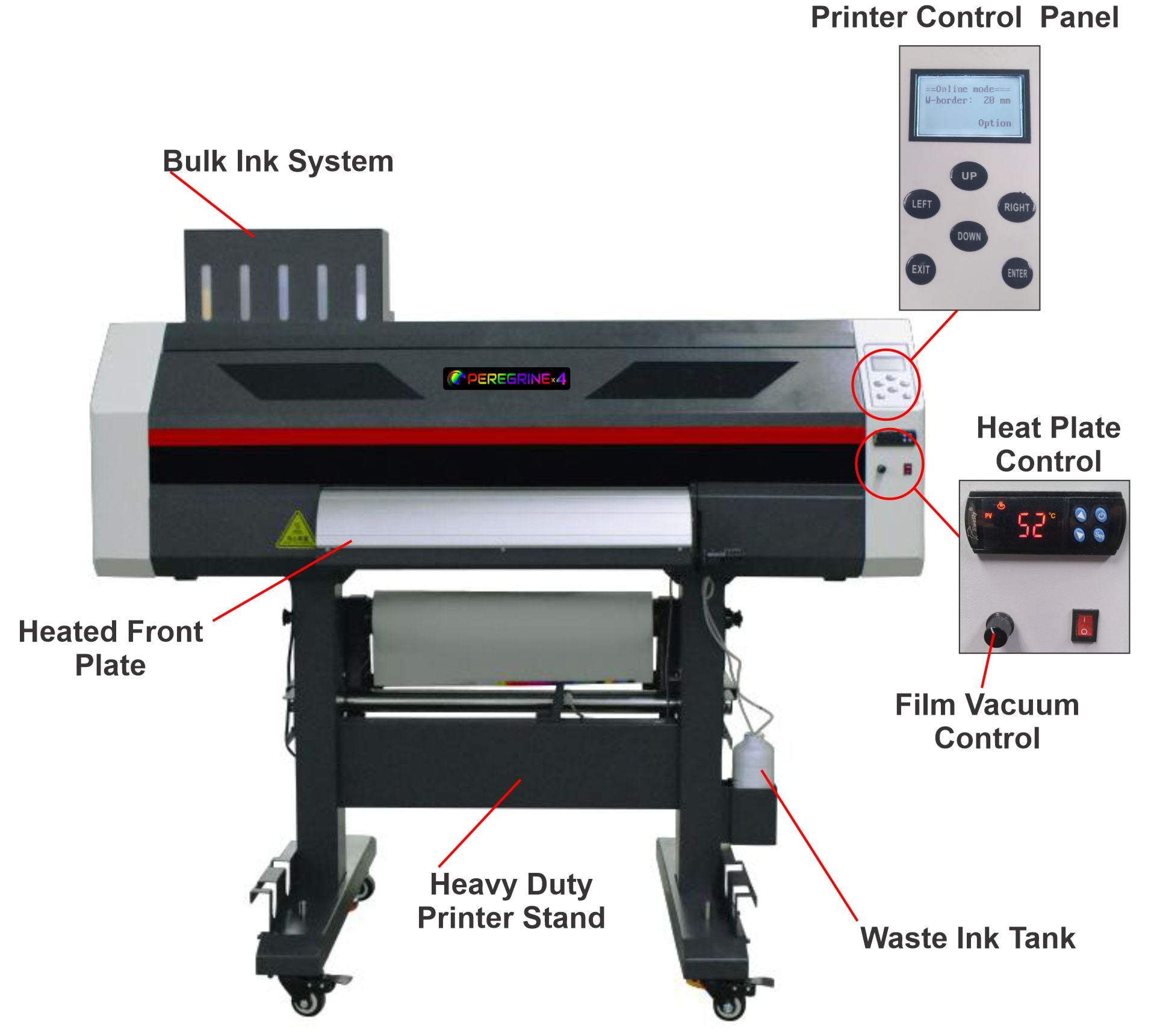The Future of Fashion: Discovering DTF Printing Innovation in the Fabric Industry
Amongst these advancements, Direct to Film (DTF) printing innovation has actually arised as an encouraging competitor, using one-of-a-kind capacities and opportunities for designers and manufacturers alike. This advanced printing technique has stimulated rate of interest due to its prospective to reinvent standard fabric printing processes.
Development of Textile Printing
From the old worlds using strategies like block printing to the digital revolution of today, fabric printing has continually pressed limits. As the craft spread to various other components of the world, brand-new techniques such as display printing and roller printing arised during the Industrial Change, reinventing the textile sector.
The intro of digital textile printing in the late 20th century noted a substantial shift towards even more sustainable and flexible printing methods. The development of fabric printing showcases an abundant history of creativity, resourcefulness, and technical progression in the world of fashion and style.
Advantages of DTF Modern Technology
With the evolution of textile printing methods from ancient techniques like block printing to modern-day innovations such as digital printing, the introduction of Direct-to-Fabric (DTF) innovation has substantially boosted the performance and sustainability of fabric printing procedures. One of the primary benefits of DTF technology is its ability to directly print styles onto material without the requirement for transfer papers, which minimizes waste and streamlines the manufacturing procedure. In addition, DTF printing permits better shade vibrancy and information accuracy contrasted to standard techniques, allowing textile producers to produce elaborate and premium styles with simplicity.
Furthermore, DTF innovation is known for its versatility, as it can be used on numerous kinds of materials, including natural fibers like cotton, woollen, and silk, along with artificial materials such as polyester and nylon (DTF Printing). This flexibility opens up a variety of opportunities for designers and producers to explore different textures and materials, bring about even more special and ingenious products in the garment industry. In general, the application of DTF modern technology stands for a considerable innovation in textile printing, offering countless benefits that add to the future sustainability and creativity of the industry
Sustainability in Fashion Manufacturing
Stressing eco-friendly practices is paramount in modern fashion manufacturing, aligning with the growing customer demand for lasting items. In recent times, the fashion business has actually faced boosting scrutiny because of its substantial environmental effect, consisting of excessive water use, chemical air pollution, and view textile waste. As an action, many fashion brand names are currently incorporating lasting techniques into their production procedures to decrease harm to the atmosphere.
Sustainability in vogue production encompasses different facets, such as using recycled and organic products, lowering energy consumption, carrying out moral labor practices, and promoting transparency throughout the supply chain. Furthermore, innovations in technology, like DTF printing, offer chances to additionally enhance sustainability in textile manufacturing. This innovation makes it possible for specific printing on fabrics, reducing ink wastage and water usage compared to conventional printing techniques.
Style Flexibility and Modification

Additionally, DTF printing promotes personalization on a range previously unattainable, enabling for individualized clothes and one-of-a-kind pieces tailored to specific preferences. In general, DTF printing modern technology revolutionizes the style landscape in the fabric industry, providing countless opportunities for innovative expression and individualized style.
Influence on Supply Chain & Market Trends
DTF printing technology in the fabric sector is reshaping supply chain dynamics and influencing market fads via its effectiveness and personalization capabilities. By enabling on-demand printing and removing the demand for big inventories, DTF technology simplifies the supply chain procedure.
Moreover, the personalization potential of DTF printing innovation is changing the market patterns in the fabric industry. As a result, DTF modern technology is driving a shift towards even more ingenious and customer-centric strategies within the textile market, forming the future of fashion.

Verdict
To conclude, DTF printing innovation is revolutionizing the textile market by offering various advantages such as layout modification, sustainability, and liberty. This cutting-edge technology is reshaping the future of fashion manufacturing, influencing supply chains, and driving market fads in the direction of more effective and environment-friendly practices. As the industry remains to develop, DTF printing will play a vital duty fit the means fabrics are generated and eaten in the years ahead.
From the old human beings making use of strategies like block printing to the electronic change of today, fabric printing has actually continuously pressed borders. As the craft spread to various other components of the world, new methods such as screen printing and roller printing arised throughout the Industrial Transformation, reinventing the textile industry.
The introduction of electronic fabric printing in the late 20th century noted a considerable shift towards even more flexible and sustainable printing methods.With the evolution of fabric printing strategies from ancient methods like block printing to modern-day technologies such as electronic printing, the intro of Direct-to-Fabric (DTF) innovation has considerably enhanced the performance and sustainability of fabric printing procedures (DTF Printing).In reaction to the necessary shift towards sustainability in style production, the adoption of cutting-edge innovations like DTF printing not only addresses environmental problems however likewise opens up avenues for unequaled style freedom and modification in the fabric industry